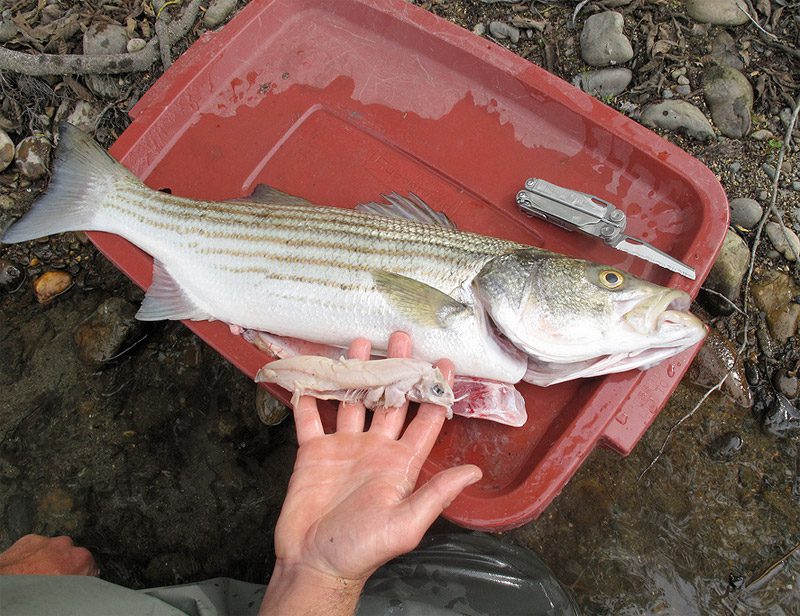Wednesday April 11, 2012

Adult striped bass inhabiting the California San Francisco Bay-Delta are known to be significant fish eating predators (piscivorous), but until recently there has been little research on population-level prey demand of sub-adults. Striped bass are anadromous as adults, migrating between the Sacramento and San Joaquin Rivers and the Pacific Ocean, but millions of sub-adults remain in the Bay-Delta estuary to feed and grow. Studying trends in striped bass consumption is not only important to understanding their feeding requirements, but also to assessing the potential impacts on prey species.
Fisheries biologists classify year-1 and year-2 striped bass as sub-adult (<18 inches) and fish year-3 and older as adults. Adult striped bass are largely opportunistic feeders, consuming almost any fish that will fit within their mouths. Juvenile striped bass initially feed on invertebrates (crustacean plankton, mysid shrimp and amphipods), but quickly move to preying on fish as they grow larger. According to a recently published study (Loboschefsky et al. 2012) in which researchers developed a bioenergetics model of sub-adult striped bass, age-2 striped bass consume an estimated 3.22-4.99 kg (7.1-11.0 lbs.) of fish annually. Perhaps the most interesting result of the model was that on a population level sub-adult striped bass, in most years, consume more prey annually than adult bass. Although adults consume more prey per individual, sub-adults consume more prey at the population level because there are millions of sub-adults residing in the estuary. However, the population level consumption of fish by adults is still estimated to be greater than for sub-adults, since prey fish make up a greater proportion of the adult diet.
